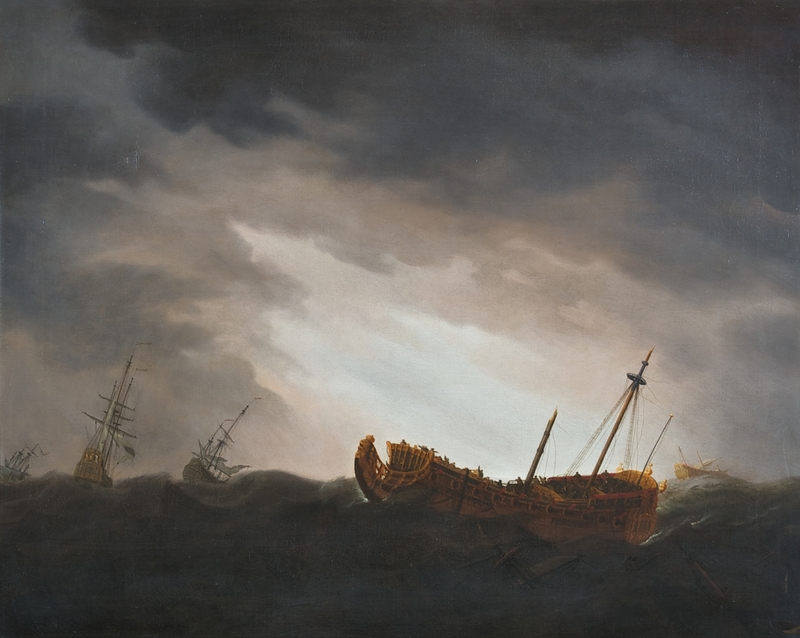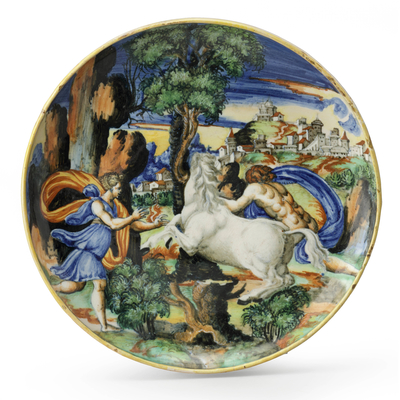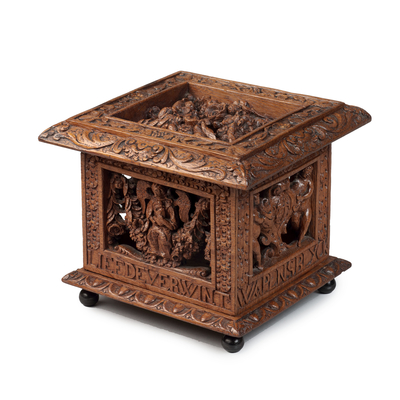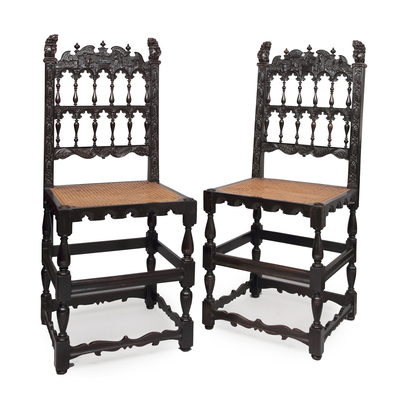Willem van de Velde the Younger and studio, 'Storm at sea'
Global shipping available
- Origin
- London
- Period
- Ca. 1703
- Material
- Oil on canvas
- Height
- 89 cm
- Width
- 115.5 cm
- Literature
R. Daalder, M. van Dam & R. Bruil, De Scheepstekenaars - vader en zoon Van de Velde, Amsterdam 2015, cat. no. 32, p. 74, 75.
M.S. Robinson, The paintings of the Willem van de Veldes, Londen 1990, deel II, p.1120, 1121, cat. no. 482.
'Oude kunst in de Nieuwe Kerk', Amsterdam, 3e Kunst- en Antiekbeurs 1985, p. 34.- Provenance
English private collection
Christie´s Londen December 17th, 1982. Lot. 111 (with wrong measurements)
Johnny van Haeften London, 1983 (as Willem van de Velde)
Rob Kattenburg 1984
Dutch private collection
Questions about this object?
Please use one of the contact options below:
Description
A dark sky with stormy clouds is sweeping over the sea. The sun is breaking through and silhouettes the principal ship. The English two-decker is in trouble: the foremast and bowsprit broke off completely, the mainmast has gone half way up the lowermast, the mizzenmast is still standing but the topmast has gone just above the cap. In the background three ships try to stay ahead of the storm, one of them just lost its foremast. The ship in danger looks like one of the ships built around 1680, provided with 70 cannons. Possibly the great storm of 1703, a destructive storm that struck England on 26 November and destroyed a big part of the English naval vessels, is depicted in this painting.
The work was painted in part by Willem van de Velde the Younger, possibly in 1703. It requires a great deal of accomplishment to depict ships in a storm in a convincing way. Van de Velde didn’t paint the whole painting because the sea doesn't show the quality we are used to from Willem van de Velde the Younger, it was probably finished by his studio assistants. This working method, in which Van de Velde painted the ship and left the further details to his assistants, was not uncommon in his workshop around 1700, especially for the somewhat larger paintings. The ships in the background are strongly reminiscent of the later pen drawings Van de Velde made with instructions for assistants. There are different versions of this painting and this present version is considered among the best. A second version, with a longer-shaped canvas, was in the collection of the Princessehof Leeuwarden / Ottema Kingma Stichting, and a third is in a English collection. Robinson does not rule out the possibility of a fourth painting by the master himself.
Willem van de Velde the Younger (1633 - 1707), son of the renowned marine drawer Willem van de Velde the Elder (1610/11 - 1693), was born in Leiden and was trained by his father and later by Simon de Vlieger in Amsterdam. The Van de Veldes specialised in marine paintings and drawings; Willem van de Velde the Elder, who was employed by the Dutch navy, created detailed and elaborate pen drawings of the naval events in the Anglo-Dutch Wars, the Younger painted atmospheric seascapes with an extraordinary eye for light and movement, showing ships, beach scenes and naval battles. The precision of the drawings of his father, depicting every part of the ship, influenced the paintings of Willem van de Velde the Younger. In 1672 the Van de Veldes left for Londen, where they received assignments to depict the battles of the Anglo-Dutch Wars from the British side, commissioned by King Charles II and James, the Duke of York and the later king of England.







